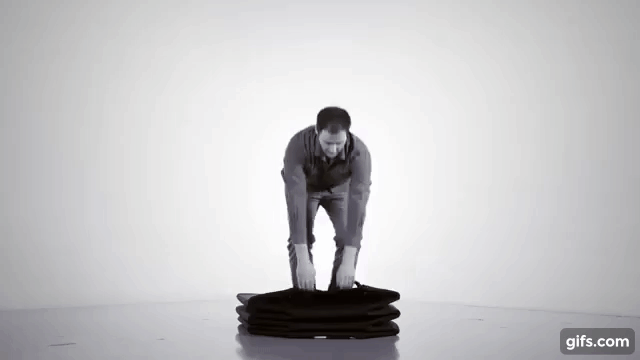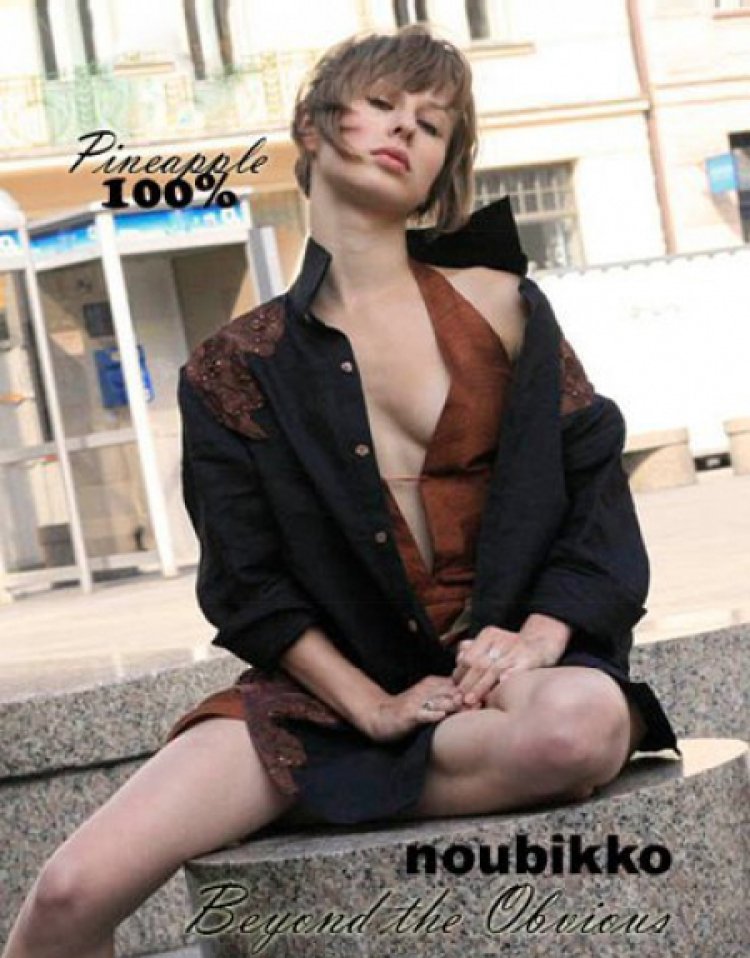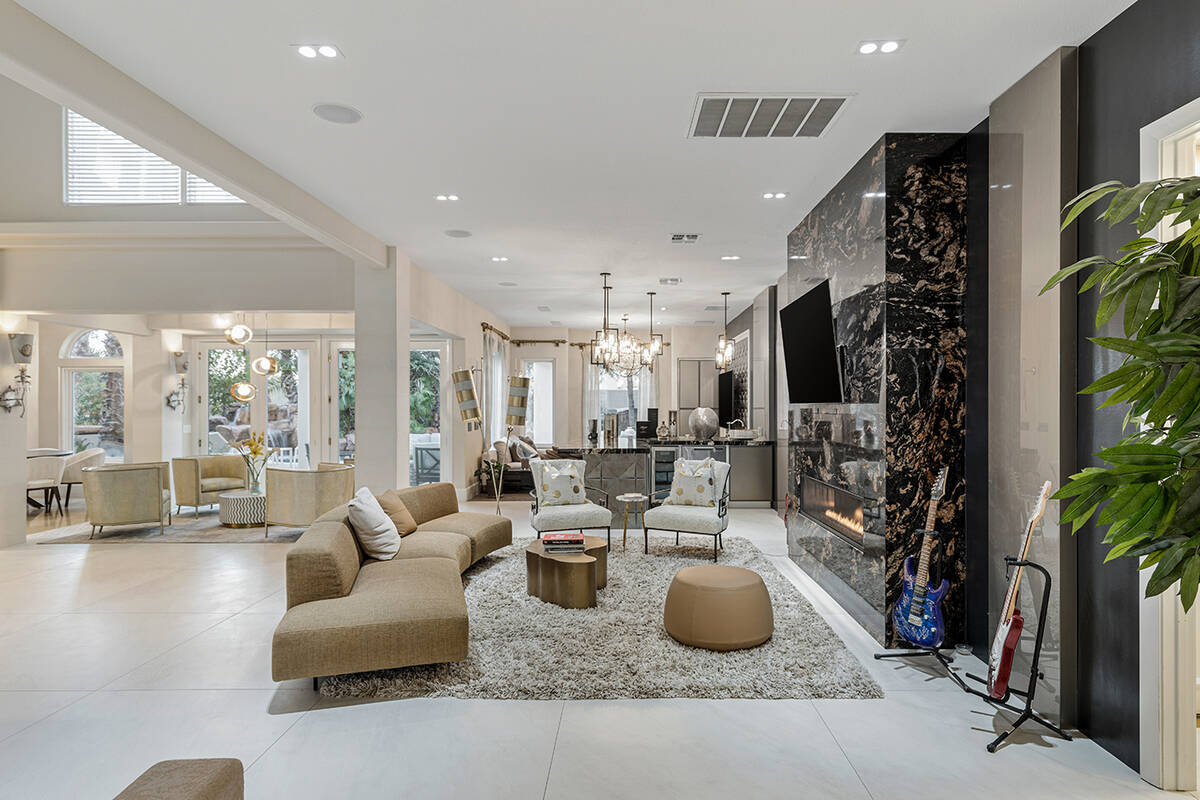I Ate at Every Buffet on the Las Vegas Strip in One Week
A gastronomical tour of the Las Vegas Strip. | Lyssa Park The soul of Las Vegas can be uncovered one buffet station at a time It was while sitting at the Tavern inside the Fontainebleau, sharing a plate of those nachos, when I admitted to a colleague that I had not dined in any of the Las Vegas Strip’s buffets since the Aladdin closed in 1997. As a food writer in and longtime resident of Las Vegas, it’s a glaring omission. My defense, if one is needed, is simple: Vegas’s consummate maximalism, along with its constantly growing food scene, make it nearly impossible to try everything once. The city teems with spectacle — restaurants that dutifully light steaks on fire or ferry them to tables in a Pulp Fiction-style briefcase. Award-winning chefs distill decades of hard-won technique into plates designed to mesmerize: sweet potato medallions laden with creme fraiche and caviar, homemade babka swirled with jammy ube halaya. If I want pristine seafood or prime rib, I can go to a restaurant that does that as a superlative. Still, my dining companion seemed floored that I had not in recent years experienced Vegas’s distinct buffet culture, introduced initially as a loss leader in casinos — that is, an easy comp to get prospective game players in the building and ply them into parting with their dollars on the casino floor. Leading up to 2020, the Las Vegas Valley had more than 70 casino buffets. Only 13 in the city survived the pandemic. Even prior to 2020, buffets had transformed. In Vegas, this style of dining has become markedly expensive — some off-Strip casinos command $75 per head for buffet entry on weeknights. Buffets, over time, evolved from a convenience to an attraction: Before the pandemic began, Caesars Entertainment positioned its buffets as an experience on par with hopping parks at Disneyland, selling a $60 pass that granted entry to five buffets for 24 hours. The Sterling Brunch at Bally’s was a black-tie $100-plus destination. Casinos, of course, have also changed: Gone are the days of arbitrary theming and larger-than-life mascots. Kitsch is almost dead. The Aladdin, where I first buffeted as a child, became the glossy Planet Hollywood resort. Treasure Island has scrapped its pirate show — and swapped out its cool-as-hell pirate skull marquee for a soulless neon “TI.” The Hard Rock Hotel became the Virgin. The Mirage and its volcano are being demolished — though the Hard Rock plans to erect a 700-foot-tall guitar-shaped tower where the volcano stands (maybe spectacle isn’t completely gone from town). Lyssa Park The art of dunking a crab leg in clarified butter. “I should just put aside a week and hit all the buffets,” I said, finally — in part to appease and in part because I felt it was time. Thus, Eater Vegas’s buffet bonanza week was born: Accompanied by my colleague, some friends, or the ancient Egyptian god Anubis (explanation to come), I decided to eat only in Las Vegas buffets for eight consecutive days. What started as an efficient means of communing with Las Vegas’s greatest commodity — Excess be her name — would lead me on a journey taken by thousands of travelers each day: one that snakes past pre-scored crab legs hoisted upon ice, woks of dubiously labeled “Asian food” idling beneath the day-glo light of heat lamps, and the immaculately portioned Gastronorm containers that comprise the endless salad bar. Plate by heaping plate, my buffet of buffets led me into the belly of Las Vegas canon and helped me understand, more completely, how a nearly 80-year-old tradition evolved from a low-priced novelty to an experience largely representative of the city itself. Day One Bacchanal at Caesars Palace and the Buffet at Wynn are both considered the pinnacle of Las Vegas’s buffet scene, commanding the highest prices (upward of $100 for dinner) and serving the most elaborate spreads. On a Tuesday evening, I began my buffet odyssey at the largest buffet in town as one of about 1,400 people that day who dined at Bacchanal. The sprawling buffet has nine open kitchens, can seat some 600 people at a time, and offers a whopping 250 dishes. Chief among them is the seafood. The jewel of the buffet, a glass-encased serving counter positioned at the entrance, looms in front of the queue of hungry ticket-holders waiting for a table. The aptly named Bacchanal is a far cry from its predecessor, Chuck Wagon at the El Rancho, which is often credited for opening the first all-you-can-eat Vegas buffet back in 1946. It was $1 to sit, a deal offered to road-weary travelers in the early morning hours. My strategy at Bacchanal, which opened in 2012, was to eat my money’s worth — every cent of the $184.22 (inclusive of tax and tip) I spent for myself and my dining companion. To help in this mission, I asked Bacchanal’s executive chef Julio Castillo how to make the buffet lose money on us. Castillo gamely directed me to the seafood and the carvery’s filet mign


The soul of Las Vegas can be uncovered one buffet station at a time
It was while sitting at the Tavern inside the Fontainebleau, sharing a plate of those nachos, when I admitted to a colleague that I had not dined in any of the Las Vegas Strip’s buffets since the Aladdin closed in 1997. As a food writer in and longtime resident of Las Vegas, it’s a glaring omission. My defense, if one is needed, is simple: Vegas’s consummate maximalism, along with its constantly growing food scene, make it nearly impossible to try everything once. The city teems with spectacle — restaurants that dutifully light steaks on fire or ferry them to tables in a Pulp Fiction-style briefcase. Award-winning chefs distill decades of hard-won technique into plates designed to mesmerize: sweet potato medallions laden with creme fraiche and caviar, homemade babka swirled with jammy ube halaya.
If I want pristine seafood or prime rib, I can go to a restaurant that does that as a superlative. Still, my dining companion seemed floored that I had not in recent years experienced Vegas’s distinct buffet culture, introduced initially as a loss leader in casinos — that is, an easy comp to get prospective game players in the building and ply them into parting with their dollars on the casino floor. Leading up to 2020, the Las Vegas Valley had more than 70 casino buffets. Only 13 in the city survived the pandemic.
Even prior to 2020, buffets had transformed. In Vegas, this style of dining has become markedly expensive — some off-Strip casinos command $75 per head for buffet entry on weeknights. Buffets, over time, evolved from a convenience to an attraction: Before the pandemic began, Caesars Entertainment positioned its buffets as an experience on par with hopping parks at Disneyland, selling a $60 pass that granted entry to five buffets for 24 hours. The Sterling Brunch at Bally’s was a black-tie $100-plus destination. Casinos, of course, have also changed: Gone are the days of arbitrary theming and larger-than-life mascots. Kitsch is almost dead. The Aladdin, where I first buffeted as a child, became the glossy Planet Hollywood resort. Treasure Island has scrapped its pirate show — and swapped out its cool-as-hell pirate skull marquee for a soulless neon “TI.” The Hard Rock Hotel became the Virgin. The Mirage and its volcano are being demolished — though the Hard Rock plans to erect a 700-foot-tall guitar-shaped tower where the volcano stands (maybe spectacle isn’t completely gone from town).
/cdn.vox-cdn.com/uploads/chorus_asset/file/25556583/Buffet_Week_Spot.jpg) Lyssa Park
Lyssa Park
“I should just put aside a week and hit all the buffets,” I said, finally — in part to appease and in part because I felt it was time. Thus, Eater Vegas’s buffet bonanza week was born: Accompanied by my colleague, some friends, or the ancient Egyptian god Anubis (explanation to come), I decided to eat only in Las Vegas buffets for eight consecutive days.
What started as an efficient means of communing with Las Vegas’s greatest commodity — Excess be her name — would lead me on a journey taken by thousands of travelers each day: one that snakes past pre-scored crab legs hoisted upon ice, woks of dubiously labeled “Asian food” idling beneath the day-glo light of heat lamps, and the immaculately portioned Gastronorm containers that comprise the endless salad bar. Plate by heaping plate, my buffet of buffets led me into the belly of Las Vegas canon and helped me understand, more completely, how a nearly 80-year-old tradition evolved from a low-priced novelty to an experience largely representative of the city itself.
Day One
Bacchanal at Caesars Palace and the Buffet at Wynn are both considered the pinnacle of Las Vegas’s buffet scene, commanding the highest prices (upward of $100 for dinner) and serving the most elaborate spreads. On a Tuesday evening, I began my buffet odyssey at the largest buffet in town as one of about 1,400 people that day who dined at Bacchanal. The sprawling buffet has nine open kitchens, can seat some 600 people at a time, and offers a whopping 250 dishes. Chief among them is the seafood. The jewel of the buffet, a glass-encased serving counter positioned at the entrance, looms in front of the queue of hungry ticket-holders waiting for a table.
The aptly named Bacchanal is a far cry from its predecessor, Chuck Wagon at the El Rancho, which is often credited for opening the first all-you-can-eat Vegas buffet back in 1946. It was $1 to sit, a deal offered to road-weary travelers in the early morning hours. My strategy at Bacchanal, which opened in 2012, was to eat my money’s worth — every cent of the $184.22 (inclusive of tax and tip) I spent for myself and my dining companion. To help in this mission, I asked Bacchanal’s executive chef Julio Castillo how to make the buffet lose money on us. Castillo gamely directed me to the seafood and the carvery’s filet mignon and prime rib — Bacchanal’s most expensive inventory. (The buffet’s manager told us that to break even, Bacchanal needs to seat 1,000 people a day; it averages about 1,400.)
/cdn.vox-cdn.com/uploads/chorus_asset/file/25557625/BacchanalBuffet_31.jpg) Matthew Kang
Matthew Kang
/cdn.vox-cdn.com/uploads/chorus_asset/file/25557624/BacchanalBuffet_23.jpg) Matthew Kang
Matthew Kang
Following Castillo’s guidance, I dedicated my first round to a plate of seafood: icy Dungeness crab and warm, buttery snow crab legs, red lobster claws, plump prawns, and mussels. This seafood course tasted as luxurious as it sounds — each bite slightly sweet and satisfyingly briny. On my second lap, I tried to find french fries, but astoundingly, amid the endless counters of sliders and bao buns and tortellini, there were none in sight. I refocused my efforts on eating my weight in lobster claws and crab legs, delighting in the snap of squeezing my metal cracker over portions of hard shell and dunking the spoils into a small tub of melted butter.
On subsequent rounds, I helped myself to plates of salmon nigiri, a ceramic pan of made-to-order short rib risotto, and a heaping scoop of creamy macaroni and cheese, a rendition so good it set the bar against which I would measure every other buffet’s macaroni and cheese.
/cdn.vox-cdn.com/uploads/chorus_asset/file/25560259/BacchanalBuffet_17.jpg) Matthew Kang
Matthew Kang
By the time I felt I might crack open like one of the crab legs on my plate, it was time to make my way to the dessert bar — a path impeded by a downed plate on the tiled walkway. After zig-zagging through tables, I approached the gleaming dessert counter and gleefully took a mochi doughnut, a cinnamon roll, a purple-colored mousse, a cream-colored mousse, and a yellow-colored mousse (the whole counter had a very “Try the gray stuff, it’s delicious” energy). I left feeling full: satisfied that I had eaten at least $100 worth of seafood, and only slightly horrified that I had committed to seven more days of buffet bonanza.
Day Two
My colleague fondly remembered a visit he took to the Buffet at Bellagio a decade earlier, so off we went to the fountain-foregrounded casino in search of brunch. The buffet here began serving all-you-can-eat meals in 1998, and it’s hard to imagine, upon walking in, that the dining room has seen any updates since then. Dim sconces cast the taupe walls, wooden furnishings, and brown floral carpet in an unflattering light. The self-serve counters feel more like a cafeteria setting than the lavish display we had just experienced at Bacchanal.
Most harrowing, signage at both of the gas station-style coffee dispensers at the beverage station nearest to my table cheerfully insisted “coffee not available.” It was 11 a.m.
/cdn.vox-cdn.com/uploads/chorus_asset/file/25557642/BellagioBuffet_03.jpg) Matthew Kang
Matthew Kang
/cdn.vox-cdn.com/uploads/chorus_asset/file/25560396/crop_BellagioBuffet_17_copy.jpg) Matthew Kang
Matthew Kang
/cdn.vox-cdn.com/uploads/chorus_asset/file/25557644/BellagioBuffet_16.jpg) Matthew Kang
Matthew Kang
/cdn.vox-cdn.com/uploads/chorus_asset/file/25557645/BellagioBuffet_19.jpg) Matthew Kang
Matthew Kang
But my spirits were high. After all, at its core, what is a casino brunch buffet if not a grander, more expensive, hotel continental breakfast? Hotel breakfast bar waffle machines — with the rotating iron and preset timer — cracked the code, producing reliably consistent waffles that have a soft interior beneath their crisped surface. Here, though, the waffle lacked the porous, maple-ready structure I like, leaving only a crunchy syrup-laden hull. Scanning the various stations felt less like the over-the-top window-shopping experience at Bacchanal and more like shopping on Amazon — trying to glean from those who have already committed to a purchase what’s worth taking, and what’s better avoided. Worth taking: a dripping slab of pink, savory prime rib. Better avoided: mysteriously pungent shrimp shu mai.
After paying $139.19 for our two entry tickets, I had my fill of pizza, which was surprisingly good for buffet pizza — its base a crust made at Spago. And because dessert goes into a different stomach, I ended my meal with a sprinkle-pocked cake pop, a raspberry macaron, a glazed doughnut, and a joyously overfilled strawberry cream puff. All in all, a solid visit, even if the room’s vibe was the opposite of whatever “vibey” means.
Day Three
A queue of ticket-holders leads into an airy atrium at the Buffet at Wynn, where diners scarf down plates of margherita pizza, soy-slicked nigiri, and scrambled eggs beneath an arched glass ceiling. Our price of entry was $150.03 for two. Inside, I found a dining room bordered by counters of food arranged with the precision of a still life. A captivating display of carbon-infused black lemon gouda foregrounds a row of oversized cheese wheels. A section of dinner rolls is made more enticing by its backdrop of freshly baked sourdough loaves. A caviar bar is meticulously curated, servers refreshing a few small plates of Ossetra-topped blinis and fried potatoes at a time.
/cdn.vox-cdn.com/uploads/chorus_asset/file/25557663/WynnBuffet_12.jpg) Matthew Kang
Matthew Kang
/cdn.vox-cdn.com/uploads/chorus_asset/file/25557664/WynnBuffet_24.jpg) Matthew Kang
Matthew Kang
Feeling less enthused about commuting yet again to the Strip, we arrived at 12 p.m., meaning our two-hour window would cross both brunch and dinner service. I started with the brunch offerings — French toast crowned with ube cream, a sugary waffle studded with sprinkles, and a bananas Foster cinnamon roll. That cinnamon roll would become the single best thing I ate over the course of my buffet bonanza week: a deeply spiced pastry swirled in warm caramel and piled with fresh banana slices. Sadly, I lingered so long over my first course that by the time I rose to grab another one, the station had turned over for dinner service.
In its place appeared four plates of crab legs, prime rib, poke, and asparagus — the latter my first vegetable choice in three days. Later, I discovered that the cinnamon roll’s sticky sweet banana mixture was offered over made-to-order crepes at the dessert counter. Score.
I was spearing a banana chunk that shimmered with edible glitter when I noted to my dining companion my frustration that, three buffets in, I still hadn’t found any french fries. “Maybe you’re just entitled,” he quipped. Maybe I am. I grew up in a city where I can go grocery shopping at midnight. My favorite bars don’t have a last call. Open container laws are as foreign a concept to me as state income tax, and, even though the Strip’s casinos have started charging for parking in recent years, I still do feel entitled to park for free. The absence of french fries was something that felt like it needed to be solved. So I went straight to the source: A Wynn spokesperson told me that if I had asked my server for fries, the chef would have been “happy” to fire some up.
/cdn.vox-cdn.com/uploads/chorus_asset/file/25557666/WynnBuffet_13.jpg) Matthew Kang
Matthew Kang
/cdn.vox-cdn.com/uploads/chorus_asset/file/25557667/WynnBuffet_14.jpg) Matthew Kang
Matthew Kang
/cdn.vox-cdn.com/uploads/chorus_asset/file/25557668/WynnBuffet_15.jpg) Matthew Kang
Matthew Kang
/cdn.vox-cdn.com/uploads/chorus_asset/file/25557669/WynnBuffet_16.jpg) Matthew Kang
Matthew Kang
/cdn.vox-cdn.com/uploads/chorus_asset/file/25557670/WynnBuffet_05.jpg) Matthew Kang
Matthew Kang
/cdn.vox-cdn.com/uploads/chorus_asset/file/25557671/WynnBuffet_06.jpg) Matthew Kang
Matthew Kang
Day Four
By now, my colleague had returned home to California. And while my friends will greedily tag along whenever I request company for steak or sushi, everyone I knew was suddenly busy the day I dined at the Luxor. In reality, I didn’t foresee it being a standout visit myself, so I buried it in the middle of my buffet-a-thon. Despite these tepid expectations, the Luxor certainly seems proud of its buffet — advertisements for it are posted everywhere on the property, including above the escalator that leads into the casino basement where the buffet is located.
As I descended into the Luxor’s bowels in search of a midday meal, I was greeted by elaborate palm leaf columns. Walking to my table brought me past the head of a stone sphynx, half buried in wind-strewn sand. At all times, a sarcophagus of a pharaoh stands guard in front of the salad bar; booths are flanked by rough-hewn brick and intentionally derelict scaffolding. I didn’t even know that this commitment to camp, this indulgence of novelty, this theme park aesthetic could still be found in Las Vegas. I felt like a child entering Toontown for the first time — yearning for someone to take a photo of me emerging from beneath one of the facades of hieroglyphics like something out of The Mummy. Above my table, the gleaming, long-snouted onyx sculpture of Anubis was my only dining companion. “Dining” may be generous here. What the buffet offered in ambiance, it lacked in food appeal. If only Anubis had awakened and risen into his mortal likeness to pick at my breakfast scraps. He might enjoy the dry waffle, freezer-burnt potatoes, and limp bacon more than I did.
But maybe my experience was unique. I overheard several parties asking their server if they could “please” be seated nearer to the food counters. The buffet host told me that, on an average day, the buffet sees 1,000 to 1,100 people — and it’s only open until 2 p.m. She also said that a significant number of customers win free entry to it by playing the MyVegas game — not paying the $45.09 like I did. As for me, I skipped past the monotone taco station, a coffee dispenser that again refused to yield to my button-pushing, and went right to dessert, where my vanilla soft serve was blue, presumably on purpose. Looking for another excuse to explore more of the themed dining room, I made one last circle around the counters. But fatigue from four days of ogling and evaluating platters of food had set in, and I instead bid Anubis goodbye.
/cdn.vox-cdn.com/uploads/chorus_asset/file/25556559/IMG_0443__1_.JPG) Janna Karel
Janna Karel
/cdn.vox-cdn.com/uploads/chorus_asset/file/25556560/IMG_0444.JPG) Janna Karel
Janna Karel
/cdn.vox-cdn.com/uploads/chorus_asset/file/25556562/IMG_0447.JPG) Janna Karel
Janna Karel
Day Five
At this point in my buffet journey, driving again on Las Vegas Boulevard and lumbering through a casino seemingly powered by neon strobe light spurred a migraine behind my right eye. Still, I soldiered on for brunch at Wicked Spoon at the Cosmopolitan with two friends accompanying me, both of whom had never been to a Vegas buffet despite living in the city for five years. The hotel’s midday buffet ran us $77.17 each.
Overwhelmed by the tedium of decision-making, I surrendered control to the buffet’s natural flow, idling forward in a glassy-eyed fugue state while my hands indiscriminately piled fried chicken, bao buns, and pickled cucumbers onto my plate. The dishes at Wicked Spoon are preportioned in tiny ramekins and metal pans, everything delicately sauced and garnished. Rows of strawberry crepes, stuffed Tater Tots, macaroni and cheese, and gyro sliders blurred before my eyes into a cacophonous slosh of color.
/cdn.vox-cdn.com/uploads/chorus_asset/file/25556564/IMG_0499.JPG) Janna Karel
Janna Karel
At our table, I found, suddenly, that I could no longer eat. I sipped the iced tea a server brought over with a haphazard hope that a quick rest would soon put me back into the game. Meanwhile, one of my friends methodically worked at pre-scored steamed crab legs, dunking the meat in melted butter and abandoning those that did not easily bend to her will. “The real luxury is that I don’t have to work for all the bits of meat,” she said, tossing a stubborn leg into her discards pile. “I can just give up and go get easier ones.”
It was a surprising comment from someone who has a compost bucket in her kitchen. Not that I had been any less consciously wasteful this week: My buffet experiment made me so focused on broadly trying everything that I ate only a few bites of each serving, politely sliding plates still filled with food toward bussers. My fantasy of winning one over on the casinos by consuming more than the price of buffet admission was stymied by existing within a body of woefully inelastic organs. I considered the sheer volume of food waste that I, personally, was responsible for over five days and felt a pang of guilt. Scavenging for the largest lobster claw in multiple buffet dining rooms had warped my lived experience — at times, I felt like royalty, or at least like someone who had unfettered access to obscene luxuries. In reality, I was cosplaying Marie Antoinette.
To assuage my guilt, I later reached out to the Cosmopolitan’s parent company MGM Resorts International. A spokesperson told me that part of the company’s initiative to divert waste from landfills means collecting some uneaten food from people like me, scraping it into bins, and sending it to Nevada farms where they become feed for pigs. The best-fed pigs in the country, in my estimation.
/cdn.vox-cdn.com/uploads/chorus_asset/file/25560413/IMG_0505__1_.JPG) Janna Karel
Janna Karel
Exiting the buffet brought us past the Cosmopolitan’s food hall, Block 16 Urban, which opened in 2018. While the food hall trend has exploded in recent years, the Cosmopolitan was an early adopter. In the six years since Block 16’s arrival, food halls have opened in place of buffets in new casinos like Resorts World, the Fontainebleau, and the Durango Casino — and replaced other buffets like the ones in the Aria Resort and the Rio. “During the pandemic, interest in buffets continued to decrease while the costs of operating one increased,” Patrick Miller, CEO and president of Rio Hotel & Casino, told me. “The buffet model is no longer as big of a draw as it once was.” Rather than cling to the nostalgia of the Vegas buffet, Miller says the team decided to open a food hall, which better fit the Rio’s $350 million renovation.
As for most restaurants, 2020 was hard on buffets. They remained closed even after Nevada’s 78-day casino shutdown was lifted — for both hygienic and economic concerns. Some buffets tried reopening as regular restaurants — customers tasked with ordering dishes served by staff. Others never reopened at all. That year, Red Rock CEO Frank Fertitta III told CDC Gaming Reports that “the shutdown gave us the ability to question everything we were doing.” Red Rock replaced the buffets at its off-Strip properties with restaurants and bars. Around the same time, Caesars chief executive officer Tom Reeg reportedly remarked, “We’re going to be smarter about how we’re in the food and beverage business,” in an earnings call, underlining that the company wasn’t willing to lose $3 million on every buffet at its properties.
I reached out to UNLV economics professor and buffet enthusiast Eric Chiang to better understand the shift. He explains that while off-Strip casinos still employ their buffets as loss leaders — offering low-priced entry, often subsidized by discounts for players who hit slot play minimums on gaming — the on-Strip casinos have shifted their strategy. “Not only were the buffets not expensive, casinos were really using it as a marketing tool,” says Chiang. “They really didn’t make money — unless you count customers coming in and then gambling.”
But gaming isn’t the driver it was 25 years ago. Last year, the Las Vegas Strip reached an all-time record with its non-gaming revenue — including food and beverage — comprising 73.4 percent of its total revenue, according to CDC Gaming Reports. “Buffets are an attraction in itself,” says Chiang. “So it’s not necessary to price the buffet so low that it loses money.” When the buffets are $100 a person and entry gives customers a limit of 90 minutes, the buffet can turn over more tables than many sit-down restaurants could. “That’s the money-maker now,” says Chiang. In short, the house always wins.
Day Six
/cdn.vox-cdn.com/uploads/chorus_asset/file/25557673/Highly_Opinionated_Spot_No_face.jpg) Lyssa Park
Lyssa Park
I was pleased to see that I wasn’t the only loser at the MGM Grand buffet — eating by myself, book in hand. It wasn’t until I got back to my table with my first plate that I realized buffets had broken my brain. I had composed a meal of: a waffle, a chocolate chip pancake, Brussels sprouts, and french fries. Yes, I finally found fries at the MGM Grand buffet, and good ones, shoestring. I watched with rapt attention as a cook moved a waffle under a heat lamp, directly from one of the rotating irons you would find at the Embassy Suites. A perfect waffle. The sprouts were divinely steamed. They were also only the third time I had eaten the color green that week. And all for $34.47.
The only thing that could make this experience better was coffee. But again, at the same gas station-style coffee dispenser, I was told it was “not available.” This time, it felt personal.
Day Seven
The Palms casino is just off-Strip but two nights a week, the AYCE buffet hosts lobster night, so I made the exception. For $76.69, I gained access to the buffet’s requisite carvery, taco station, and salad bar — plus its dedicated sections for both whole lobsters and lobster tails. By now, I was used to eating alone — the novelty of buffet-surfing had long staled to friends and family. Sitting at a booth that faced out toward the dining room, my table for one strewn with lobster, tacos, macaroni and cheese, and a cup of ramen, I felt extreme self-consciousness — lacking, as I did, even the slightest pretense that the table’s plates were communal. So I directed my attention to working on the lobsters — pilfering the meat and dropping the empty red husks into a provided metal bucket with a satisfying clang. The clarified butter station proffered vats of mercilessly churned cream made salty or spicy with seasonings. I poured myself bowls — not cups, bowls — of each variation.
/cdn.vox-cdn.com/uploads/chorus_asset/file/25556575/IMG_0554.JPG) Janna Karel
Janna Karel
Unfortunately, my buffet-diving had chipped away at my appetite. My plate emptying was poor, especially compared to the table next to me, where a family of four already had a stack of eight or so discarded plates. They told me that they were visiting from Los Angeles and commuted from Caesars Palace to the Palms to attend Lobster Night; their goal was to eat 20 lobsters between them. “It’s our first time at a buffet,” said Paul Pham. “We’re trying to get our money’s worth.”
Across the dining room, someone won a drawing for a four-pound lobster named Bambi.
Day Eight
With a digestive tract in shambles, a mind burdened by indecision, and only two more buffets to hit, I decided to knock out both the Excalibur and Circus Circus in one day. When the Excalibur opened in 1990, it was the largest hotel in the world. Like other older properties, its garage is not attached to the casino, so at 9:41 a.m., I paid $23 event pricing for parking and made the five-minute walk in 102-degree heat to the casino floor. Hot, hungry, and unhappy about the parking fee, I let the trudging, suitcase-toting mass shepherd me into the building.
I had already learned some lessons in my bonanza buffet week. There was a line to enter the buffet that I refused to wait on, so I sauntered up to the self-serve kiosk with the same self-righteousness I feel whenever I go through the TSA line: imagining that everyone around me takes notice of how efficient I am at removing my shoes, that they hope to emulate me, and that, together, we can improve a broken system. I paid $46.17.
At the beverage station, four people had queued behind one of the gas station coffee dispensers, leaving the other one open. Again, I would get to be the Smartest Person at the Buffet. I beelined to the front and pressed the button for the unoccupied coffee machine. “Coffee not available.” I filled a glass with chocolate milk, reasoning that its color was similar and could possibly trick my body into thinking it was caffeinated. Not perfect logic, but a buffet is a place for taking, not thinking.
/cdn.vox-cdn.com/uploads/chorus_asset/file/25556579/File__12_.jpg) Janna Karel
Janna Karel
Minutes later, as I picked at my Velveeta-y macaroni and cheese, I began to seethe. In eight days, at the four buffets with self-serve beverage stations, no coffee machine had ever met my desire for it to pour.
When I walked back to my car, it was 111 degrees.
I drove up Las Vegas Boulevard to Circus Circus, a casino I frequented as a child for the Adventuredome — then the Grand Slam Canyon — and the Midway area of carnival games. Remembering my delight at the Luxor, I hoped that the 50-year-old clown-themed property would have a similarly high-camp buffet. Or that the trays of scrambled eggs and roast chicken would be somewhat delicious. Instead, the $20 in darts I impotently tossed at the Midway, the $15 I fed to the coin-operated slot machine in Slots-a-Fun, and the $12.98 I paid to be the only adult on the Spongebob Squarepants dark ride were better uses of money than the $25.94 I spent to have access to its buffet stations.
Day Nine
I thought Day Eight was where my buffet crawl would end. But the following week, the Bellagio announced that it was expanding its buffet to include dinner service after suspending it in late 2023. So to the Bellagio I returned. “We waited until convention business went down a little and the summer crop came in, which is more of your typical buffet crowd,” says Bellagio chef Stephan Dermendziev. “Coming out of the pandemic, people wanted to be free, right? People want to make a game plan, load up their plates. It’s fun.”
Fun is maybe the point. In a tourist corridor with increasingly more big-ticket entertainment — the Sphere, the Formula One grand prix, residencies from the likes of Adele and Mariah Carey — there’s little shortage of fun to be had, of restraint to be exercised. If excess is Las Vegas’s greatest commodity, then willful distraction from a world steeped in inequality is the cost. At least for the weekend. “We’ve been waiting to come to the buffet,” Melissa Brownlee, of Houston, Texas, told me while we stood in line at the poke bar. She gestured at the seven other people in her party, fanned across the room. “When in Vegas!”
My second visit was dominated by the prime rib, of which I had two helpings — it really is good — and plates of pre-portioned crab legs, al pastor tacos, gravy-smeared mashed potatoes, and pretzel-style dinner rolls. While at the beverage station, I pulled over the manager and asked her to show me how to use the coffee dispenser. (Surely, it must have been user error at this point.) With the manager’s authority bullying it into submission, I finally got a cup of coffee. At the Vegas buffet, you really can have it all.
/cdn.vox-cdn.com/uploads/chorus_asset/file/25556581/IMG_1132.JPG) Janna Karel
Janna Karel




















